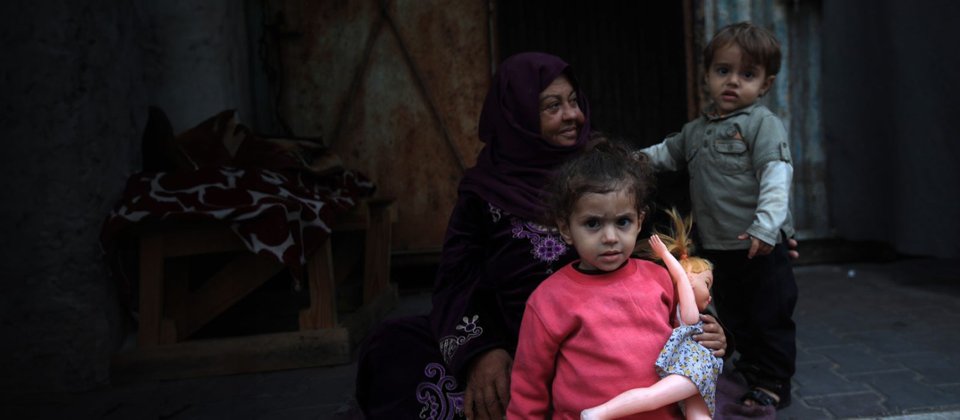
UPDATE SHELTERBOX
Ook in Gaza staan we nog altijd in de startblokken om hulp te verlenen zodra de blokkades worden opgeheven. Daarnaast lopen de projecten in Soedan, Syrië, Mozambique, Kameroen, Burkina Faso, Yemen, Ethiopië, Tsjaad en Malawi gewoon door.
Landelijk is het aantal donaties in maart helaas wat achtergebleven bij de verwachtingen maar we hopen dat door de oproep voor Myanmar dat weer zal bijtrekken.
Voor de meest recente informatie m.b.t. Myanmar en ook Gaza, kan zolang de website nog in onderhoud is, terecht op de LinkedIn-pagina waarop alle updates vanuit Engeland worden gedeeld. Totdat de website van ShelterBox weer in de lucht is volg ik ShelterBox op LinkedIn om al het nieuws te volgen.
Wat doet ShelterBox in Myanmar?
We zijn erg blij dat een team van ShelterBox toestemming heeft gekregen om in Myanmar hulp te verlenen. Het team werkt ter plaatse vanuit Yangon en ook vanuit Bangkok samen met lokale partners, hulporganisaties en netwerken zoals Rotary.
Zij werken hard om noodhulp op het gebied van onderdak te kunnen leveren aan mensen van wie de huizen zwaar beschadigd of verwoest zijn door de aardbeving. De situatie is extreem uitdagend en de humanitaire respons zal tijd vergen.
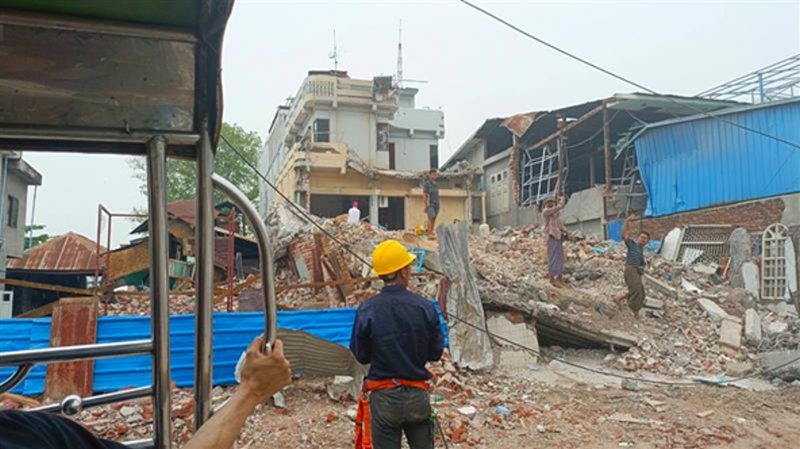
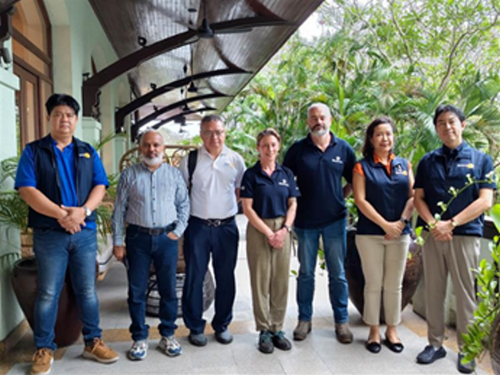
Het SB-responseteam ter plaatse
We willen de hulp snel op gang brengen, maar wel op de juiste manier, zodat we geen extra schade toebrengen aan mensen die al kwetsbaar zijn door conflict en de aardbeving. We voeren gesprekken met een organisatie die de nodige registratie heeft om veilig in Myanmar te kunnen opereren. De focus ligt op de zwaar getroffen gebieden in Myanmar, vooral in landelijke regio’s waar mensen nu in de open lucht of in beschadigde onderkomens verblijven.
De volledige omvang van de schade wordt langzaam duidelijk. Mensen hebben behoefte aan schoon water, onderdak en essentiële huishoudelijke artikelen. Naast noodonderdak overwegen we waterfilters, muskietennetten, hygiënekits en solar lights.
ShelterBox onderzoekt hoe ze deze hulpgoederen kunnen leveren. De situatie is echter complex door oorlog, beperkte toegang tot getroffen gebieden, verwoeste infrastructuur en logistieke uitdagingen. Er geldt tijdelijk een wapenstilstand tot 22 april, maar die is fragiel.
De recente aardbeving op 13 april met een kracht van 5,5 volgde op een eerdere zware beving (7.7M), die tot een miljoen mensen dakloos maakte. De schade is groot: ingestorte huizen, verwoeste scholen en ziekenhuizen, en een ernstig gebrek aan basisvoorzieningen zoals water, voedsel en medische zorg. Door naschokken, conflict, regenval en verschoven munitie blijft de hulpverlening uiterst moeilijk.
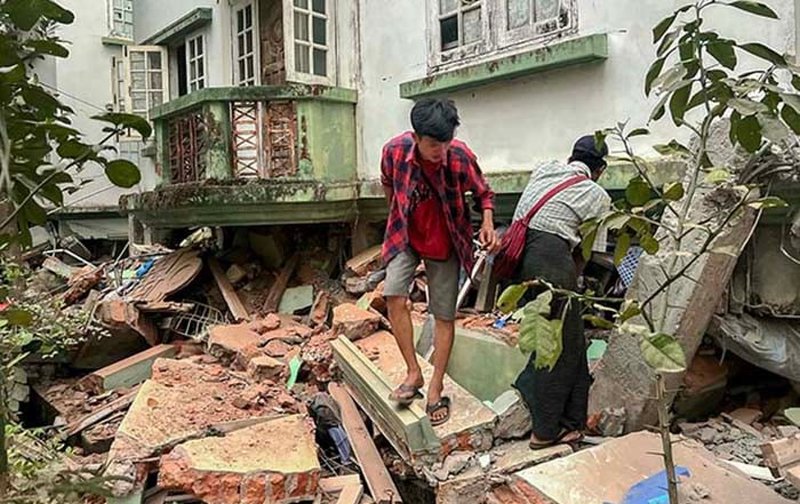
Hoe kun je helpen?
- Doneer aan de hulpactie van ShelterBox
- Deel informatie
- Organiseer een inzamelingsactie
Senior ShelterBox Emergency Coordinator on the crisis in Myanmar
Get the latest insights on the Myanmar earthquake crisis from ShelterBox’s Senior Emergency Coordinator. Learn about the ongoing emergency efforts, challenges and ShelterBox’s role in providing relief to those affected.
10 April 2025
What insight have you gained from being in Bangkok?
That the process for importing material aid into Myanmar has its challenges. There are few organisations set up to do it, and those that are don’t necessarily have the capacity or experience to cover large volumes. We are working with Rotary colleagues and partners to overcome this, and we are exploring all avenues. It appears that most organisations here are in a similar position and there is a great deal of collaboration, and information sharing taking place to enable all actors to implement projects.
What are you hearing from conversations you've had with people in Myanmar about the scale of destruction?
Colleagues who have managed to access the affected areas are reporting widespread damage with people living in large groups under makeshift tarpaulin structures. They’re essentially sleeping in the open, either because their homes are completely destroyed, or they are fearful of aftershocks collapsing their homes on top of them. Living in these types of makeshift shelters long-term brings significant risks, particularly to women and girls, and there is an urgency to get people into better shelters with their families as quickly as possible.
What are you hearing about need? What do people need most and how will it help?
Food, water and shelter are the top three priorities. The rainy season is about to begin and there has been significant rainfall already that people have no protection from. As well as protection from the weather, providing shelter and household items will help prevent the spread of disease that we often see after large scale disasters.
What are the next steps?
We have a better understanding of what people need, but where we might work, and the type of damage sustained there will help guide what type of shelter we will focus on. We’re exploring options for a small ShelterBox team to travel to Myanmar to make sure we get the best information we can to make those decisions.
Any comment on challenges to help people better understand why responses to conflict areas take time? And why it's important we do things right?
ShelterBox will respond to need wherever it exists. We understand that affected populations are living in areas controlled by both the ‘State Administration Council’ SAC and the National Unity Government (Government in exile) and as such we are investigating ways in which we can gain access to people who are most vulnerable. This is not straightforward and requires careful consideration as well as permissions from authorities for our partners to work in areas of conflict. At the moment, there is a ceasefire in place in the affected region. It is unknown how long this will hold.
Gaza update
April 17, 2025
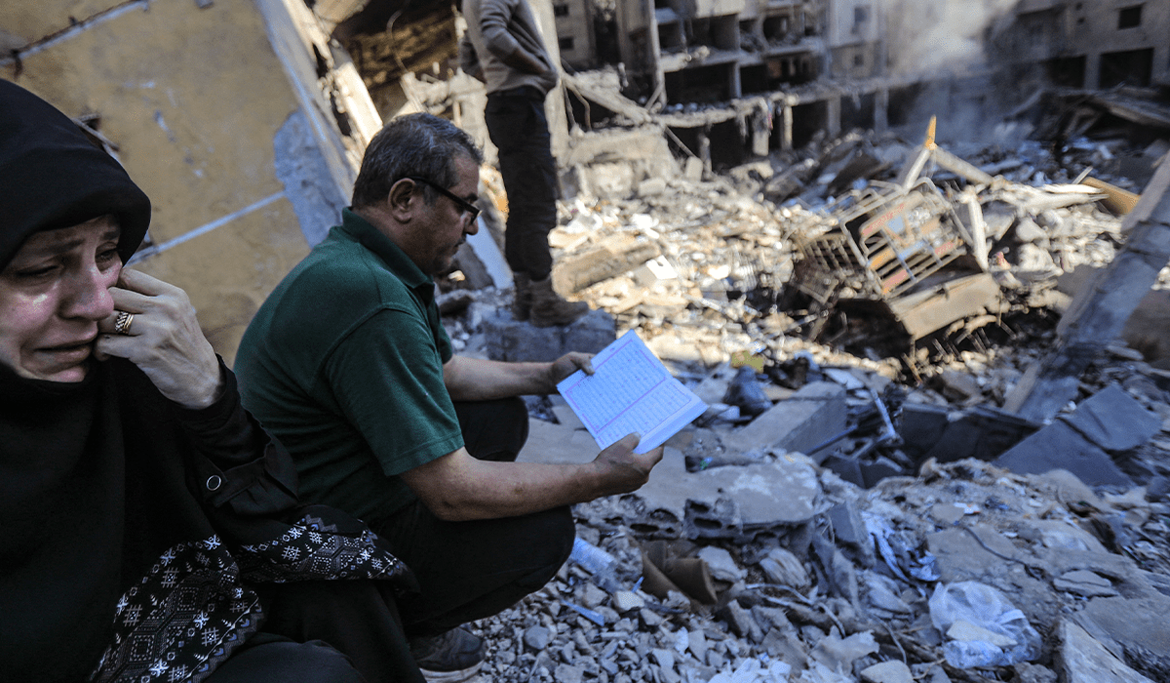
No humanitarian aid has entered Gaza for more than six weeks (since 2 March). Ordinary people and families continue to suffer the consequences of a brutal blockade of vital aid. People do not have enough food to eat, access to clean water, medical supplies, or adequate shelter.
Having broken a ceasefire agreement that had brought some much-needed relief, Israel continues to prevent lifesaving supplies reaching the people of Gaza.
Most are completely reliant on aid for their survival and that has only worsened with most agricultural land damaged or destroyed and the prices of goods, including cooking oil and gas, skyrocketing. We have more aid in Jordan and Dubai ready to go, and enough tents to shelter thousands of people, but we can’t move it because of the restrictions. Most of the aid that we had in Gaza before the blockade has now been distributed by our partners PARC, MAP, and SDF. Temporary and portable shelter items like tents, tarpaulins, and rope.
More than 18 months have passed since the full-scale invasion of Gaza and to add to the already dire situation evacuation orders have been extended to Rafah and large areas of the north of Gaza, uprooting hundreds of thousands of people once again. A permanent ceasefire and end to the fighting is the only way to ease the vast suffering on Palestinians in Gaza and protect their human rights.
